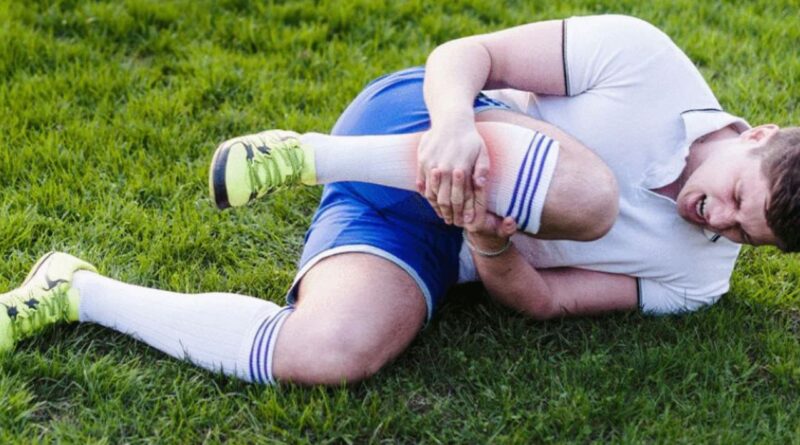Turf Burn: Understanding the Impact and Prevention of an Athlete’s Challenge
Complications and Risks of Turf Burn: Understanding the Potential Consequences
While turf burn is often viewed as a minor injury, it is important to recognize the potential complications and risks associated with this seemingly innocuous abrasion. Understanding these consequences can emphasize the importance of proper prevention, prompt treatment, and careful management of turf burn.
One significant risk of turf burn is the potential for infections. When the protective barrier of the skin is compromised, bacteria and other pathogens can easily enter the wound, leading to infection. It is essential to clean and disinfect the affected area promptly to minimize the risk of infection. If an infection occurs, medical attention may be necessary to prevent further complications.
In some cases, turf burn can result in delayed healing or poor wound closure, leading to scarring. Deep or extensive turf burns may take longer to heal, and improper care can increase the chances of scarring. Applying appropriate dressings, keeping the wound clean, and following medical advice can help minimize scarring and promote optimal healing.
Repeated instances of turf burn can also have long-term consequences. Continuous friction and abrasion on the same area may lead to chronic skin irritation and sensitivity. This can make athletes more prone to future turf burns and discomfort during sports activities.
To mitigate these risks, athletes should prioritize prevention strategies and seek prompt medical attention for severe cases. Proper wound care, including cleaning and dressing, can significantly reduce the risk of infections and promote faster healing. Additionally, using protective gear, employing correct playing techniques, and being mindful of playing surface conditions can help prevent turf burn in the first place.
Turf Burn in Different Sports: Understanding the Impact and Prevention Strategies
Turf burn is not limited to a specific sport; it can occur in various athletic activities that involve contact with synthetic or natural turf surfaces. Understanding how turf burn manifests in different sports and implementing sport-specific prevention strategies is crucial for athletes to stay protected and perform at their best.
In soccer, turf burn commonly affects areas such as the knees, elbows, and shins due to frequent sliding and diving on the turf. Soccer players can minimize the risk of turf burn by wearing long sleeves, long pants, and shin guards for added protection. Additionally, ensuring that footwear provides proper traction and support can help prevent slips and falls that may lead to turf burn.
In American football, players often encounter turf burn when making aggressive tackles or diving for the ball on artificial turf surfaces. Wearing appropriate protective gear, including padded sleeves, pants, and gloves, can help reduce friction and minimize the chances of turf burn. Regularly inspecting and maintaining the condition of the playing surface is also crucial to prevent excessive abrasion.
Field hockey players frequently experience turf burn due to the nature of the sport, which involves fast movements and frequent contact with the turf. Wearing protective gear such as shin guards, knee pads, and elbow pads is essential to minimize the risk of turf burn. Additionally, adopting proper playing techniques, such as sliding correctly with proper body positioning, can help reduce friction and decrease the likelihood of turf burn incidents.
Also Read: Top 15 Payroll Software System for Small & Medium Businesses
Turf Burn in Professional Sports: Impact on Athletes and Strategies for Prevention
Turf burn is not just a concern for amateur athletes; it also poses challenges for professionals in various sports. The impact of turf burn on professional athletes can be significant, affecting their performance, careers, and overall well-being. Understanding these implications and implementing effective prevention strategies is crucial in professional sports.
For professional soccer players, turf burn can disrupt their agility and speed, compromising their ability to perform at the highest level. Moreover, persistent or severe turf burn injuries can lead to missed games or reduced playing time, impacting an athlete’s career progression and potential contracts. Professional soccer players often prioritize prevention by wearing long-sleeved jerseys, long pants, and specialized padded gear to minimize the risk of turf burn during intense matches.
In American football, where turf burn is common due to the aggressive nature of the sport, professional players may face challenges in maintaining their physical condition and performance. Turf burn can lead to discomfort and hinder an athlete’s ability to make quick and precise movements. Professional football players often employ preventative measures such as specialized padded sleeves and pants, along with regular maintenance of playing surfaces, to mitigate the risk of turf burn.
Field hockey players at the professional level are well aware of the impact of turf burn on their game. Turf burn can affect their agility, ball control, and overall performance. These athletes take steps to prevent turf burn by using appropriate protective gear, including shin guards, knee pads, and elbow pads, which provide an additional layer of protection during intense matches.
conclusion
turf burn is a common injury that affects athletes at all levels, including professionals. The impact of turf burn in professional sports can be significant, leading to decreased performance, missed games, and potential career setbacks. Therefore, understanding the implications of turf burn and implementing effective prevention strategies are crucial for professional athletes.
Professional athletes prioritize prevention by using specialized gear, such as padded sleeves, pants, shin guards, and knee pads, to minimize the risk of turf burn during intense matches. Additionally, maintaining playing surfaces and ensuring their quality and safety play a crucial role in preventing excessive friction and reducing the occurrence of turf burn incidents.
Preventing turf burn in professional sports is not only about protecting athletes’ physical well-being but also safeguarding their careers and aspirations. By taking proactive measures, professional athletes can minimize the impact of turf burn on their performance, allowing them to compete at the highest level and maintain their competitive edge.
Furthermore, continuous research and advancements in sports technology contribute to the development of innovative materials and equipment that further enhance the prevention of turf burn. The collaboration between athletes, sports organizations, and medical professionals plays a crucial role in implementing effective strategies to prevent and manage turf burn in professional sports.
In the ever-evolving landscape of professional sports, the focus on preventing and addressing turf burn remains paramount. By prioritizing athlete safety, raising awareness, and implementing comprehensive prevention measures, professional sports can continue to thrive while ensuring the well-being and longevity of their athletes.


